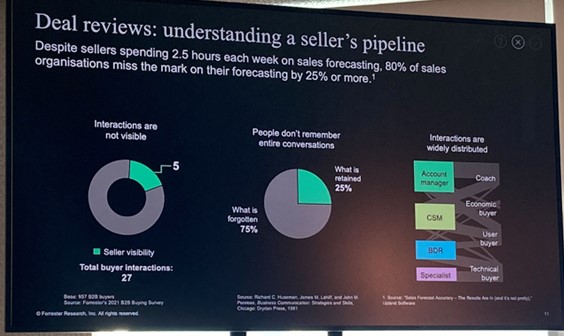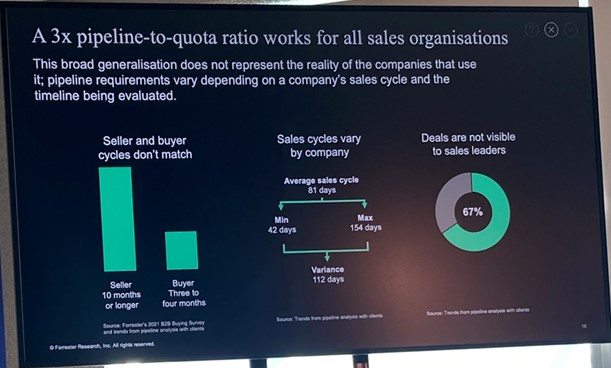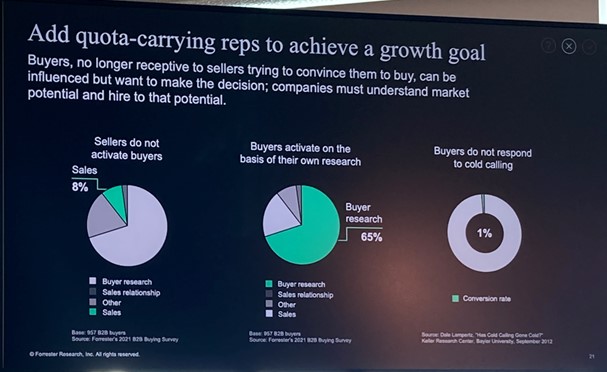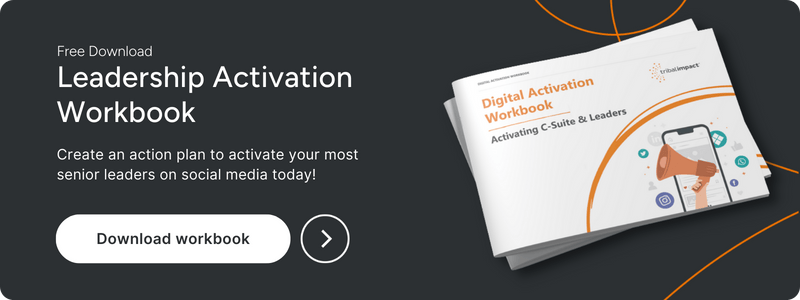After two years huddled in a home office, occasionally home schooling, it felt good to get out of the house and back to conferences. After much deliberation, I decided to attend the Forrester B2B Summit EMEA.
I’ve long followed the research from Forrester, and since their acquisition of Sirius Decisions in 2018, their work has become even more relevant to sales and marketing professionals.
I was on a mission. I wanted to meet all the exhibitors and understand their solutions. I wanted the latest thinking around marketing and was keen to put myself in sessions I wouldn’t have otherwise chosen to attend. For me, it was about better understanding the future challenges that our customers are facing.
First up, sales. I spent considerable time understanding the latest sales methodologies, myths, and technologies to find out how Social Selling could better weave into existing processes.
Here’s a summary of my key takeaways:
Pipeline Reviews Are Time-Consuming And Ineffective:
Quite a statement. Apparently, sellers spend an average of 2.5 hours per week forecasting, and 80% of the time they miss the mark of their forecasting by 25% or more.
Organisations are already capturing 82% of the deal interactions a buyer has with them – this information, if used correctly, will determine the likelihood of closing a deal and identifying the steps needed to win, for example, meetings and emails.
If organisations could unlock how to use their existing data better, this will lead to better informed decisions, freeing up sales to better utilise those 2.5 hours a week.

Seller And Buyer Cycles Don’t Match
According to Forrester’s B2B Buying Survey, the seller estimates a typical buying process takes 10 months or longer, whereas the buyer estimates the purchase cycle to take approximately 3-4 months.
Nearly two-thirds of deals were created in the quarter close in the quarter and 67% of deals are not visible to sales leaders.
This mismatch between expectations causes poor sales forecasting and unrealistic expectations of the seller and buyer. Insight is lost and, in some cases, so is trust.
Machine learning and AI will help predict the pipeline forecast and understand the signals in the pipeline.

To Achieve A Growth Goal, Don’t Add More Salespeople
Apparently, not true! Ten years ago perhaps, because the sales teams initiated the conversations.
But this is no longer the case. According to Forrester, 67% of the buyer’s journey is a digital one. Only 8% of sales are now activated by salespeople.
Another organisation tells us that when B2B buyers are considering a purchase, they spend only 17% of that time meeting potential suppliers. When comparing suppliers, the amount of time spent with any one sales rep may only be 5%.
The buyer is now in control. You don’t need salespeople to convince customers to buy. You need salespeople who can advise, influence, and ultimately close business. Growth is not achieved by adding more salespeople.

Sales And Marketing Need To Align Around Revenue Opportunity, Not Leads
The buying committee is getting bigger which is slowing down purchase cycles. 84% of B2B buying decisions are made as a group, which means the way sales and marketing work together also needs to change.
Most sales and marketing alignment models are based on SLA agreements on how many leads are sent across, or MQLs passed over of SQLs accepted. However, this model needs to radically change based on the committee buying as a unit, not as an individual.
The general message was, to say goodbye to leads and hello to opportunities with associated buying groups. The common focus for sales and marketing now must be around the opportunity and not the individual lead.
This approach allows for complete revenue team alignment – an engine that is focused more on buying groups and not signals from individuals. I’ll write more about this in another blog.
What came across loud and clear was that current sales teams seem to be working in an ineffective vacuum, misjudging the buyer’s journey, working inefficiently alongside marketing, and wasting a considerable amount of time reporting internally. Sounds a bit harsh, but that was my general takeaway.
I know there has been a lot of talk about sales and marketing alignment, but all the signals point (from the sessions I attended) about the need to really reassess how those teams work together to achieve a common goal – growth.
Throwing individual contacts across the wall, no matter how qualified you make them and whatever you want to call them, isn’t going to work. Both sales and marketing need to align around the buying unit. It isn’t a ‘lead’ until you’ve identified the buying circle and gone some way to influence it.
This was my first set of takeaways from the Forrester B2B Summit event. I have more to share around leadership, partnerships, the future of content, and how sales enablement tools support Social Selling.

